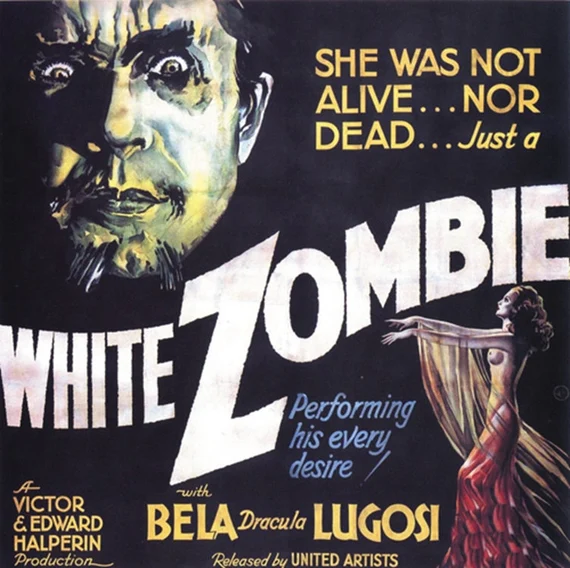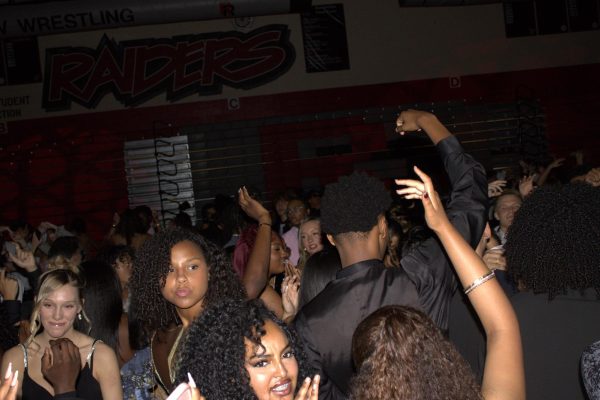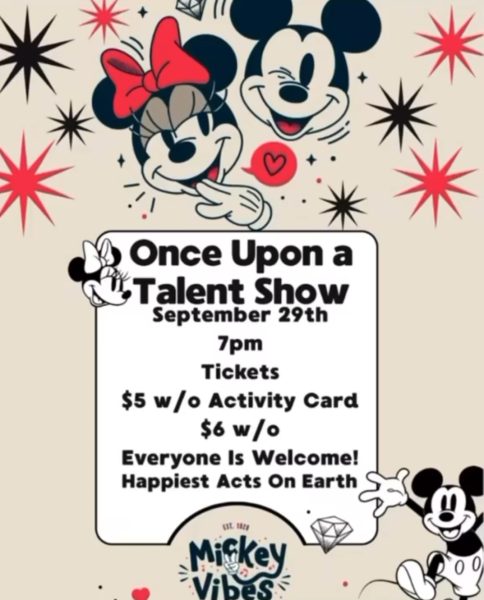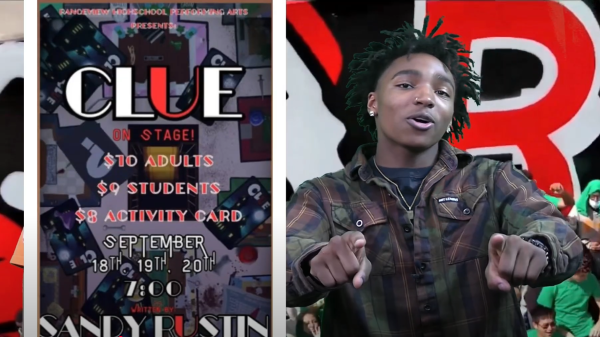The Evolution of Zombies

October 24, 2022
When zombies first truly appeared on the big screen can be debated until the end of time itself, but one thing is agreed upon, zombies and zombie-like monsters are a big part of modern horror. Zombies in pop culture and in folklore alike have always been something feared or put in a negative light, but these stories and cultural views of the monsters have changed significantly over time, from being a product of voodoo to becoming a living monster. Zombies have also appeared in countless different forms of media from movies and TV shows to video games, novels, and even appearing in music. So how have zombies evolved overtime in pop culture and do they still hold the same message they once did?
To truly understand the evolution of zombies you’d have to look back all the way to their origin. Zombies have been seen across essentially all cultures in history, but the zombies we all know and love are primarily from Afro-Caribbean cultures. Dating back to the 17th and 18th century, “zombies” first appeared in Haiti, formerly Saint-Dominque, when it was ruled by the French. During this time the typical zombie wasn’t the more modern idea of an undead flesh eating monster, but rather a victim of voodoo. This kind of zombie was someone who was brought back from the dead or under the influence of a bokor (voodoo witch for hire) and became a personal slave. Zombies are absolutely related to and influenced by slavery ,but we will never know their full story as Haitian history was recorded by colonizers like Christopher Columbus, who likely would’ve left that information out. To quote The Atlantic, “The original brains-eating fiend was a slave not to the flesh of others but to his own.”
Zombies in Haiti still exist outside of pop culture in a very sad turn of events. “Zombification”, or the act of turning someone into a literal zombie is an actual issue in Haiti, to the extent that there are laws documented in Haiti against the act of zombification. Zombification is a form of slavery to put it simply, a way of forcing someone to work long, grueling hours without any fighting back or risk of being caught by authorities and the way it’s done is very simple. First, the victim is afflicted with some form of poison, typically puffer fish toxins, which slows down their heart rate and breathing, greatly limits their ability to move and communicate and also acts as a hallucinogen. This makes the victim appear to be dead and because of the climate in Haiti, they are typically declared dead within 3 to 4 hours at most, and buried very quickly after. The victims are then dug up hours later and from a combination of the puffer fish toxin and the trauma of being buried alive, they become husks of the person they once were, losing most of their identity and doing as they are told. As mentioned this process is such a large issue in Haiti that there are laws declaring the act as attempted murder and ever murder.
Although technically their pop culture origin, zombies in novels have not had nearly as large of an impact like cinema. Zombie novels can be dated back to 1921 in the H.P. Lovecraft story “Herbert West–Reanimator” which is a story about a man who creates a serum that can reanimate corpses. However, up until about 1971, there would not be another zombie novel in either the flesh eating corpse or Haitian Voodoo type, and no the 1954 “I am Legend” by Richard Matheson does not count. Although the direct inspiration for “The Omega Man” (1971) and “I am Legend” (2007), the monsters are based around vampires more than anything.
The first mention of zombies in cinema is in the 1932 film “White Zombie” directed by Victor Halperin. Although dated by time, “White Zombie” is a very strong film, following a couple going to a mansion in Haiti to get married, only for the host to attempt and steal the bride by having a bokor turn her into a zombie. The film looks at zombies completely in the voodoo manner however, acknowledging the folklore and the laws surrounding the act but still including the supernatural element of the victim’s soul being stolen. “White Zombie” is regarded as the first zombie movie however it is highly overshadowed by the 1968 classic, “Night of the Living Dead” by George A. Romero. “White Zombie” proves that Halperin was one of the first directors to truly show that human fears come from what others are capable of.
1968 is the year that the zombies known and loved today truly were introduced to Hollywood with George A. Romero’s classic, “Night of the Living Dead”. Romero’s film was the first film to show the reanimated corpses on the big screen but also introduced the flesh eating corpses. Aside from being a horror film, “Night of the Living Dead” was also a social-political commentary. The film made small statements about the injustice of minorities in America and was only an even larger impact as the film was produced and released during the 1960’s civil rights movement. Regardless of the meaning or the influence the film had socially, it was forever cemented as the first true zombie film, even granting Romero the title of “The Father of zombie films” and even “The Godfather of horror” as his works still impact horror movies of all types made today.
“Night of the Living Dead” has such a large impact on cinema in fact, that after the film’s release you can see a new zombie movie every single year in contrast to the zombie movie here and there between ‘32 and ‘68. Most of these films follow a very similar goal that is seen today, money. The zombie franchise blew up from the Romero film, so the subgenre was high in demand and all sorts of directors, producers and companies were throwing their hat into the ring to make a high grossing film. Most of the films are just plain bad, none actually having a message to share and absolutely none of them living up to the legacy of “Night of the Living Dead”. Even Romero’s own sequels to the ‘68 classic were let downs with convoluting plot lines and poor production decisions, like making the undead ghouls…blue? It’s not up until 1980’s that memorable zombie content were to be released and this came as the Stephen King novel “Pet Sematary” which was adapted into a film later that decade and unfortunately, by this time the undead became essentially indistinguishable.
The problem with zombies is that they can only be done so many times and this is about where their story ends. The zombie film genre has become one in the same, always having a group of survivors fight and survive in the apocalypse against undead flesh eating corpses. Films like “Pet Semetary” (1989) “Prince of Darkness” (1988) give the viewer an enjoyable and even frightening experience however they are far from unique to most of the other films. However, the 1988 film “The Serpent and the Rainbow” takes the viewer back to its origin.
“The Serpent and the Rainbow” is based on the 1985 novel “The Serpent and the Rainbow: A Harvard Scientist’s Astonishing Journey into the Secret Societies of Haitian Voodoo, Zombies and Magic” by Wade Davis. The novel is an autobiography of Davis’s time in Haiti, investigating a man who was declared dead but later found to be living years later and describes the process of zombification mentioned previously, but also shows the influence of voodoo in Haiti and just how much power the act holds. Directed by the infamous Wes Craven, the 1988 film adaptation greatly portrays the story of Davis’ journey but of course, is also highly dramatized. The remarkable thing about the film however is that it brought awareness to not only Haitian corruption, but also the real Voodoo problems in the country. The film takes place during a political rebellion against the president Jean-Claude Duvalier, also known as “Baby Doc”. On top of showing the country’s reaction to the dictator’s corruption, the film depicts just how fearful the locals are of bokors and the extent of their influence, where not even the authorities will help.
To name and discuss every piece of zombie media would be to write a novel, so with the major pieces of the puzzle found, it’s time to do a general overview. Zombies are not unique at all anymore, and frankly they haven’t been for a long time. The zombie sub genre is one of the cheapest films to make and is consistently a big payout leading to production companies to pump out TV shows and movies like Shaun of the Dead, World War Z, iZombie, Zombieland and countless more. There are very honorable mentions that play a unique taste on the monsters like the game series Resident Evil and The Last Of Us, with both franchises using unique ideas and having messages that either were very poorly done in the past, or hadn’t been done at all. Other films or shows that have proven to be more than a cash grab are things like Train to Busan (2016) The Walking Dead (2010 –) and the aforementioned Shaun of the Dead (2004), but of all this great content, zombies have not changed at all. The same idea of a flesh eating corpse has been played hundreds, if not thousands, of times and all the spins and twists have been blurred into a single bold line.
A very honorable mention is the 2008 Canadian horror film “Pontypool”. “Pontypool” is another classic zombie movie set in Ontario, Canada, but it provides by far the most unique take on the sub-genre, with the apocalypse being almost entirely depicted through speech rather than outright showing the carnage. The film takes place inside a radio station and views the entire idea of zombies through an auditory lens rather than visual, with the contagious virus being spread through speech and not bite. This is the first piece of media to take a very large spin on the zombie franchise in the last couple of decades by changing the way an infection works, with the first example being “Night of the Living Dead”. In Haitian Voodoo folklore the zombies are created through a poison, not through a transmittable virus. But the film took a bite at the big guy, being an indie film that takes a large leap reinventing a core rule of zombies, “Pontypool” is forgotten by most and many who know the movie don’t see it in a very good light.
Zombies have gone from a folklore showing the torture and evil of slavery and the fear that people can hold, to a real life problem in a corrupt stricken Third World country, to a walking corpse that holds no meaning. Yet zombies still hold a heavy grip on cultures all over the world today, and of course zombies exist in different ways not mentioned, but the monster has not evolved at all in decades, at least not successfully. So is that the end of the family tree for the beloved horror? Obviously not, innovation will take its time but hopefully one day someone will reinvent the dead into a new, more modern concept for society to fear, like being turned into “The tax man” if you’re bitten by one or something.












